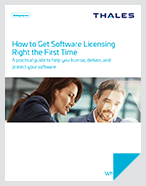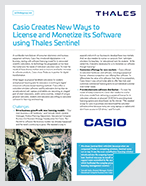Microsoft Certified Solution Developer Applications Lifecycle Management
Good application lifecycle management is essential to the success of any software developer in today's market. In this article, we'll discuss what it is, how it works, why it's so important, and what tools you can use to help your business manage your application lifecycles successfully.
What Is an Application Lifecycle?
An application lifecycle is the entire "lifetime" of a software application, from concept to end of life. That is, the term refers to the entire process from the moment the idea for the application is conceived until the moment it's retired from use.
What Is Application Lifecycle Management?
Application lifecycle management, often abbreviated as ALM, is a system for managing the entire lifecycle. This system includes the people, tools, and processes that allow the company to successfully navigate each stage of the lifecycle and move from one phase to the next.

A good ALM system optimizes the productivity of the team and makes it easier to collaborate, and provides good support for agile or DevOps development approaches, ultimately improving the quality of the product. The importance of application lifecycle management lies in its ability to help businesses achieve high levels of efficiency, stay competitive, and avoid unnecessary expenses while providing their users with the best possible experience.
What Are the Common Stages in Application Lifecycle Management?
Depending on the company's development methodology, the stages of ALM may constitute distinct phases, or they may overlap as part of a continuous integration and development approach. Either way, we can identify 5 common stages:
Stage 1: Application governance
Application governance refers to the initial decision-making phase. In this stage, the team outlines what functions and features they need from the application to support their goals. They design the idea for the application based on these requirements.
In the more traditional waterfall approach of software development, this process starts with the most general needs and moves down towards the more specific ones, using a hierarchical structure. In agile methodology, which uses continuous or iterative approaches, the structure of the list of requirements is less hierarchical and the needs are defined according to use cases.
Stage 2: Application development
This is where the magic happens: the actual creation of the application. The development team takes the requirements and creates a development plan based on them. This often involves breaking down the requirements into chunks, assigning them to the right teams, and developing a schedule for the implementation of each phase. Then, the teams create the code and integrate it according to the plan.
Stage 3: Software testing and quality assurance
Once the application has been developed according to the requirements, it must be tested to ensure that it indeed meets all the requirements, runs smoothly, and provides the intended user experience. This is done by preparing test cases and testing environments and seeing how the application performs in every relevant scenario. Testers then provide feedback and issue reports on any problems or bugs, and the development team makes changes to the product according to that feedback.
The product marketing team defines the level of quality and stability required for this stage to be complete. Once this level is reached, the product is ready for release.
Stage 4: Deployment
At this stage, the product is released to the users. There are a number of ways this might be done, depending on customers' needs. Initially, software was physically delivered to customers on dongles or CD, but today, consumers want to be able to download the software they purchase instantly.If the customer needs more than one application, the products can be packaged and deployed together.
Stage 5: Operations and maintenance
The ALM process doesn't end with the deployment of the product to users — it continues through ongoing operation and maintenance of the product. To ensure that the software is meeting its business goals, its use and performance should be monitored and managed even after it's been released. This allows the team to find and address any remaining issues, and provide updates and improvements.
The final phase of this stage is the retirement of the product. The team should define, ahead of time, a set of criteria according to which the decision to retire the software and move on to a new version or new product will be made.

Why Is Application Lifecycle Management Important?
The importance of application lifecycle management cannot be overstated. It ensures that the requirements for projects are met, streamlines workflows, and makes it easier for the team to work together. The result is a higher-quality product developed more efficiently within a shorter time frame — and that is crucial in today's fast-paced market.
Key benefits of ALM
Below are some of the key results of effective application lifecycle management:
Clear roadmap
ALM creates a clear, easy-to-follow roadmap for the application. The success of any project starts with good planning: providing as clear and detailed a plan as possible so all teams know exactly what to do and can meet their objectives efficiently.
Reduces unnecessary expenses
Managing the application lifecycle effectively means fewer expenses: there will be fewer iterations and errors to fix because the team is much more likely to get it right the first time.
Better communication between teams
ALM helps all team members stay aligned and work together more effectively. It makes the workflow more visible to all team members, eliminating silos and enabling better communication. Each team member understands the project, his or her role in its implementation, and where things stand in real-time.
Better decision-making
Having a bird' eye view of the entire process makes it much easier to see where the product has been, where it's going, and how to get it to where you want it to be in the best possible way. ALM enables team members to stay on top of the project status and goals and see which skill sets are most needed for various parts of the process.
Faster development and deployment
ALM helps teams produce software with unmatched speed and efficiency. The integration inherent in the system streamlines the process so no time is wasted on unnecessary iterations.
Higher-quality products
Ultimately, all this leads to a higher-quality product that provides the user with the best possible experience.
What's the Difference Between ALM and Software Development Lifecycle Management?
Application lifecycle management is a broader concept than software development lifecycle management. The term "software development lifecycle" refers specifically to the application development phase, from concept to deployment, while ALM refers to the bigger picture and the entire process from the initial planning until the application is retired. The software development lifecycle may be part of the application lifecycle management strategy; conversely, ALM may include several software development lifecycles.
Application Lifecycle Management Tools
Because this whole process is so complex, it's strongly recommended to use application lifecycle management products to keep track of it all.
What are application lifecycle management products? These tools are a type of software that helps you track and plan all the activities around the application lifecycle.
According to a ReportLinker report on ALM market research, the application lifecycle management market size is expected to grow from $3,589.52m in 2020 to $4,929.31m by the end of 2025 — an increase of 37.33%. This projected growth in the application lifecycle management market size indicates that a lot of companies are seeing the value in these tools and that more and more are adopting their use.
What Businesses Benefit Most from Application Lifecycle Management Tools?
Application lifecycle management products are a great idea for any business that develops software — especially businesses that are developing multiple applications. There's a lot of information to keep track of, and for many developers, a collection of spreadsheets just isn't going to cut it.
What Are the Best Application Lifecycle Management Tools?
The best ALM tools include features such as:
• Version control
• Real-time communication capabilities
• Requirement management features
• Project planning and estimation features
• Source code management
• Test management
Make sure that the tool works well with the development methodology and processes that work best for your team.
InfoQ recommends the following ALM toolsets:
• ALMComplete by SmartBear Software
• Clarity+AgileVision+ITKO by CA technologies
• CollabNet TeamForge by CollabNet
• DevSuite by TechExcel
• HP Application Lifecycle Management by HP
• IBM Rational solution for Collaborative Lifecycle Management by IBM
• JIRA+Confluence+Stash+Bamboo by Atlassian
• Orchestrated ALM Solutions by Serena Software
• Rally Platform by Rally Software
• StarTeam by Borland
• Team Foundation Server by Microsoft
• ThoughtWorks Studios (Mingle+Go+Twist) by ThoughtWorks

Software Licensing Management and ALM
While ALM is critical for the planning and development stages, ALM is only minimally connected with the order-to-cash flow, and therefore not built to accelerate software delivery, operations, and management. For that, you need a specialized software licensing management platform.
Why? Because monetizing software is a cornerstone of digital-age business development, yet many organizations overlook the tools they need to enable software-based revenue growth.
A software licensing management platform allows you to:
• Segment your software to deploy it in packages tailored to the needs of your users
• Protect your software against intentional and unintentional unauthorized use
• Keep track of who is using your software and how
You need to implement flexible software license models and appropriate application packaging to accommodate the exact requirements of your users.
Software licensing management systems also help you streamline and simplify your supply chain, reducing the number of SKUs you need to manage in your ERP. Additionally, the business insights you gain are invaluable for understanding how your software is performing.
Thales Sentinel provides a wide range of licensing management and security solutions that can help your business succeed in managing your application lifecycles in an optimal way. Explore more and learn how Thales Sentinel can help you meet your software monetization business goals.

Navigate The Process of Licensing, Delivering, and Protecting Your Software
How to Get Software Licensing Right The First Time - White Paper Check out our practical guide to navigating the process of licensing, delivering, and protecting your software. Discover the importance of optimizing your software licensing. Avoid common mistakes with the...

Increase Your Revenue and License Your Software in New Markets like Casio - Case Study
Casio Creates New Ways to License and Monetize its Software using Thales Sentinel A worldwide manufacturer of consumer electronics and business equipment solutions, Casio has introduced digitalization in its business, starting with software licensing model for its renowned...
Microsoft Certified Solution Developer Applications Lifecycle Management
Source: https://cpl.thalesgroup.com/pl/node/28926